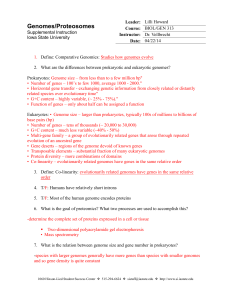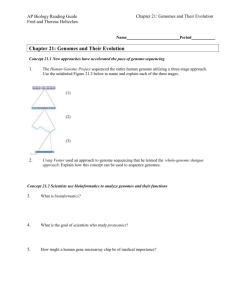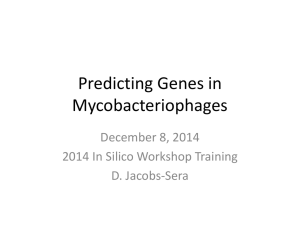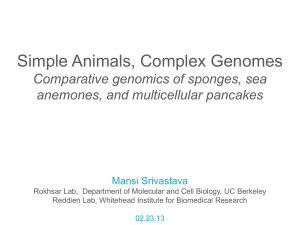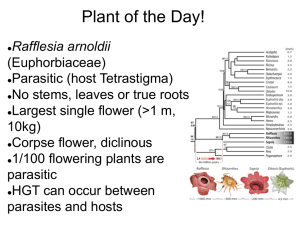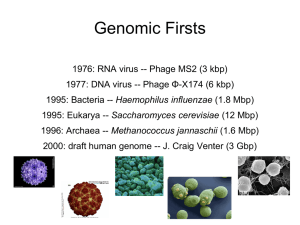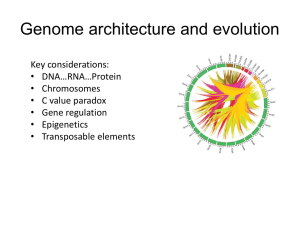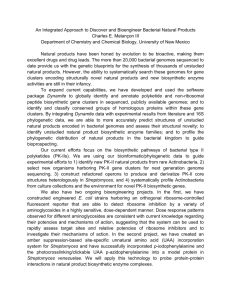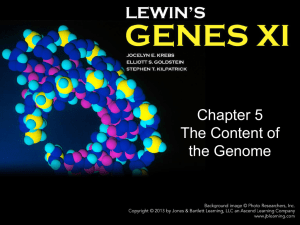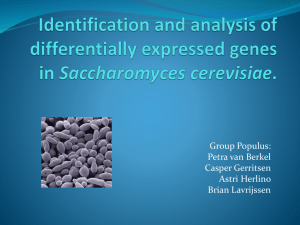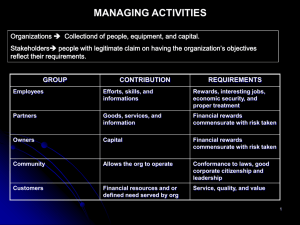here
advertisement
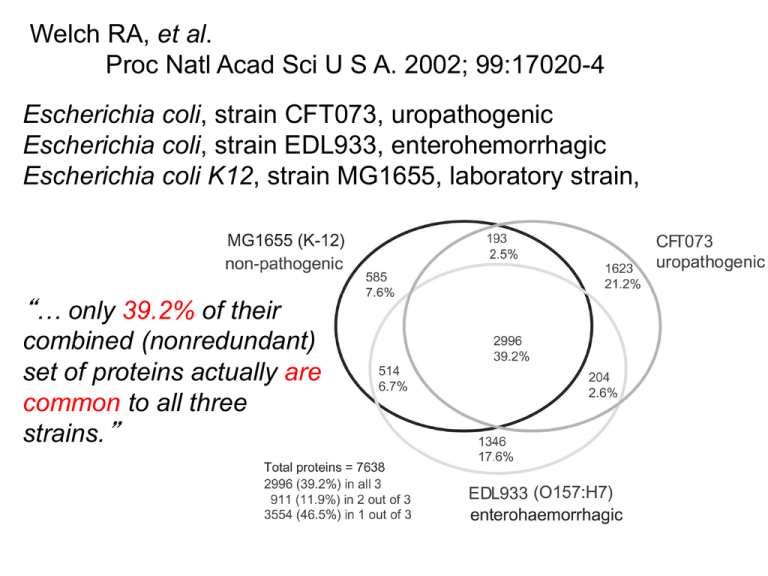
Welch RA, et al. Proc Natl Acad Sci U S A. 2002; 99:17020-4 Escherichia coli, strain CFT073, uropathogenic Escherichia coli, strain EDL933, enterohemorrhagic Escherichia coli K12, strain MG1655, laboratory strain, “… only 39.2% of their combined (nonredundant) set of proteins actually are common to all three strains.” Image source: web.uconn.edu/mcbstaff/benson/Frankia/FrankiaHome.htm core A.W.F. Edwards 1998 Strain-specific Edwards-Venn cogwheel From: Normand et al. (2007) Genome Research 17: 715 GENOMES OF CLOSELY RELATED ORGANISMS: CORE AND SHELL Description of Group B Streptococcus Pan-genome Genome comparisons of 8 closely related GBS strains Tettelin, Fraser et al., PNAS 2005 Sep 27;102(39) Method Bacterial Core Genes that are shared among all Bacteria Bit score cutoff 50.0 (~10E-4) f(x) = A1*exp(-K1*x) + A2*exp(-K2*x) + A3*exp(-K3*x) + Plateau Genes without homologs f(x) = A1*exp(-K1*x) + A2*exp(-K2*x) + A3*exp(-K3*x) + A4*exp(-K4*x) + A5*exp(-K5*x) + Plateau Core Essential genes (Replication, energy, homeostasis) ~ 116 gene families Extended Core Set of genes that define groups or species (Symbiosis, photosynthesis) ~ 17,060 gene families Accessory Pool Genes that can be used to distinguish strains or serotypes (Mostly genes of unknown functions) ~ 114,800 gene Families uncovered so far Gene frequency in individual genomes Accessory Pool Extended Core 19.6% 76.6% 3.8% Core Figure 2 The bacterial pan-genome. Each gene found in the bacterial genome represents one of three pools: genes found in all but a few bacterial genomes comprise the extended core of essential genes (∼250 gene families that encode proteins involved in tran... Pascal Lapierre , J. Peter Gogarten Estimating the size of the bacterial pan-genome Trends in Genetics, Volume 25, Issue 3, 2009, 107 - 110 http://dx.doi.org/10.1016/j.tig.2008.12.004 A Kézdy-Swinbourne Plot plot can be used to estimate the value that a decay function approaches as time goes to infinity. Assume the simple decay function f(x) = K + A e-kx , then f(x + ∆x) = K + A e-k(x+∆x). Through elimination of A: f(x+∆x)=e-k ∆x f(x) + K’ For the plot of f(x+∆x) against f(x) the slope is e-k ∆x. For x both f(x) and f(x+∆x) approach the same constant : f(x)K, f(x+∆x)K. (see the def. for the decay function) The Kézdy-Swinbourne Plot is rather insensitive to deviations from a simple single component decay function. More at Hiromi K: Kinetics of Fast Enzyme Reactions. New York: Halsted Press (Wiley); 1979 Kézdy-Swinbourne Plot If f(x)=K+A • exp(-k•x), then f(x+∆x)=K+A • exp(-k•(x+∆x)). Through elimination of A: f(x+∆x)=exp(-k • ∆x) • f(x) + K’ And for x, f(x)K, f(x+∆x)K (blue arrow) ~230 novel genes per For each line: Slope = exp(-k• ∆x) genome Novel genes after looking in x genomes Both the value at infinity (time or number of genomes) = K and the decay constant k can be estimated! only values with x ≥ 80 genomes were included Even after comparing to a very large (infinite) number of bacterial genomes, on average, each new genome will contain about 230 genes that do not have a homolog in the other genomes.
